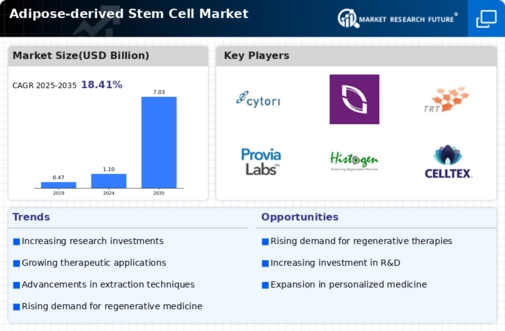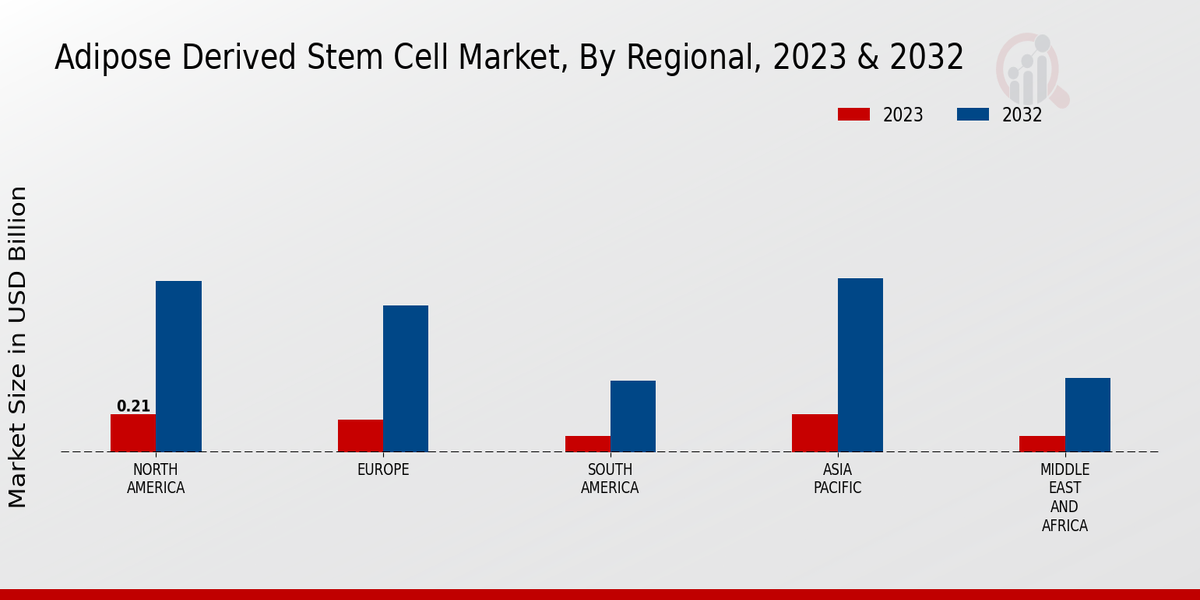Market Growth Projections
Rising Demand for Regenerative Medicine
The Global Adipose-derived Stem Cell Market Industry experiences a notable surge in demand for regenerative medicine, driven by advancements in cellular therapies. As healthcare systems increasingly adopt innovative treatments, adipose-derived stem cells are recognized for their potential in tissue regeneration and repair. This trend is underscored by the projected market growth from 1.1 USD Billion in 2024 to an estimated 7.03 USD Billion by 2035, reflecting a compound annual growth rate (CAGR) of 18.37% from 2025 to 2035. Such growth indicates a robust interest in harnessing the therapeutic capabilities of adipose-derived stem cells across various medical fields.
Growing Awareness of Stem Cell Therapies
There is a growing awareness among healthcare professionals and patients regarding the potential benefits of stem cell therapies, particularly those utilizing adipose-derived stem cells. The Global Adipose-derived Stem Cell Market Industry is poised to expand as educational initiatives and clinical success stories proliferate, fostering a more informed patient base. This increased awareness is likely to drive demand for treatments that leverage the regenerative properties of adipose-derived stem cells, contributing to the market's projected growth trajectory. As more patients seek out these therapies, the industry may experience a significant uptick in adoption rates.
Regulatory Support for Stem Cell Research
Regulatory bodies worldwide are increasingly supportive of stem cell research, which positively impacts the Global Adipose-derived Stem Cell Market Industry. Governments are establishing frameworks that facilitate clinical trials and expedite the approval process for innovative therapies. This regulatory environment encourages investment in research and development, leading to the emergence of new treatments based on adipose-derived stem cells. As regulations evolve to support scientific advancements, the market is likely to benefit from increased funding and resources, ultimately enhancing the pace of innovation and application in clinical practice.
Expanding Applications in Aesthetic Medicine
The Global Adipose-derived Stem Cell Market Industry is witnessing an expansion in applications within aesthetic medicine, particularly in cosmetic procedures. Adipose-derived stem cells are increasingly utilized for facial rejuvenation, fat grafting, and skin regeneration, appealing to a growing demographic seeking non-invasive cosmetic solutions. This trend is bolstered by the rising popularity of personalized medicine, where treatments are tailored to individual patient needs. As the aesthetic sector continues to embrace these innovative therapies, the market is expected to grow, driven by consumer demand for effective and safe cosmetic interventions.
Technological Advancements in Cell Processing
Technological innovations in cell processing techniques significantly enhance the efficiency and efficacy of adipose-derived stem cell applications. The Global Adipose-derived Stem Cell Market Industry benefits from advancements such as improved extraction methods and enhanced culture systems, which facilitate higher yields of viable stem cells. These innovations not only streamline the manufacturing process but also ensure better quality control, thereby increasing the reliability of stem cell therapies. As a result, the market is likely to witness accelerated growth, driven by the increasing adoption of these advanced technologies in clinical settings.












